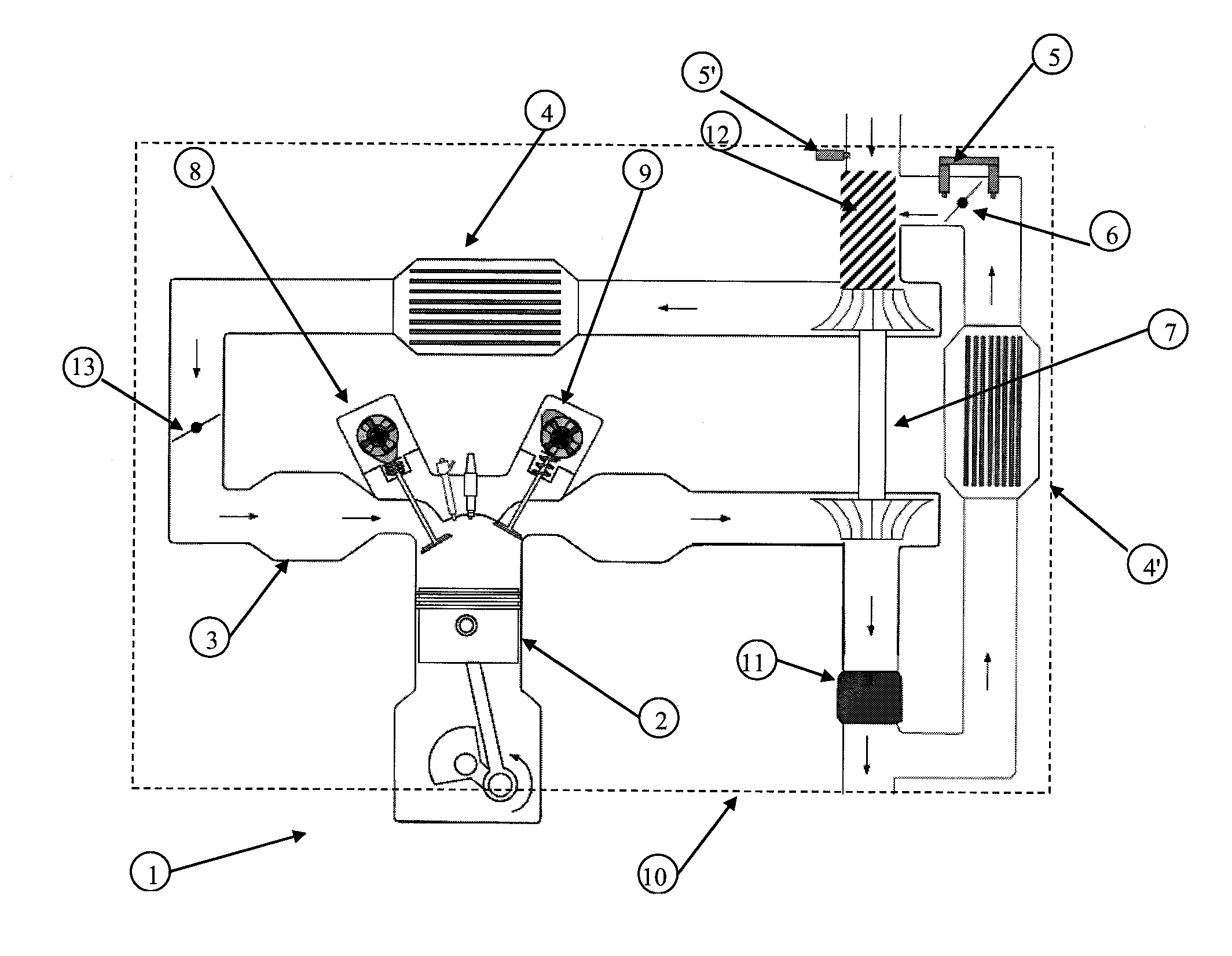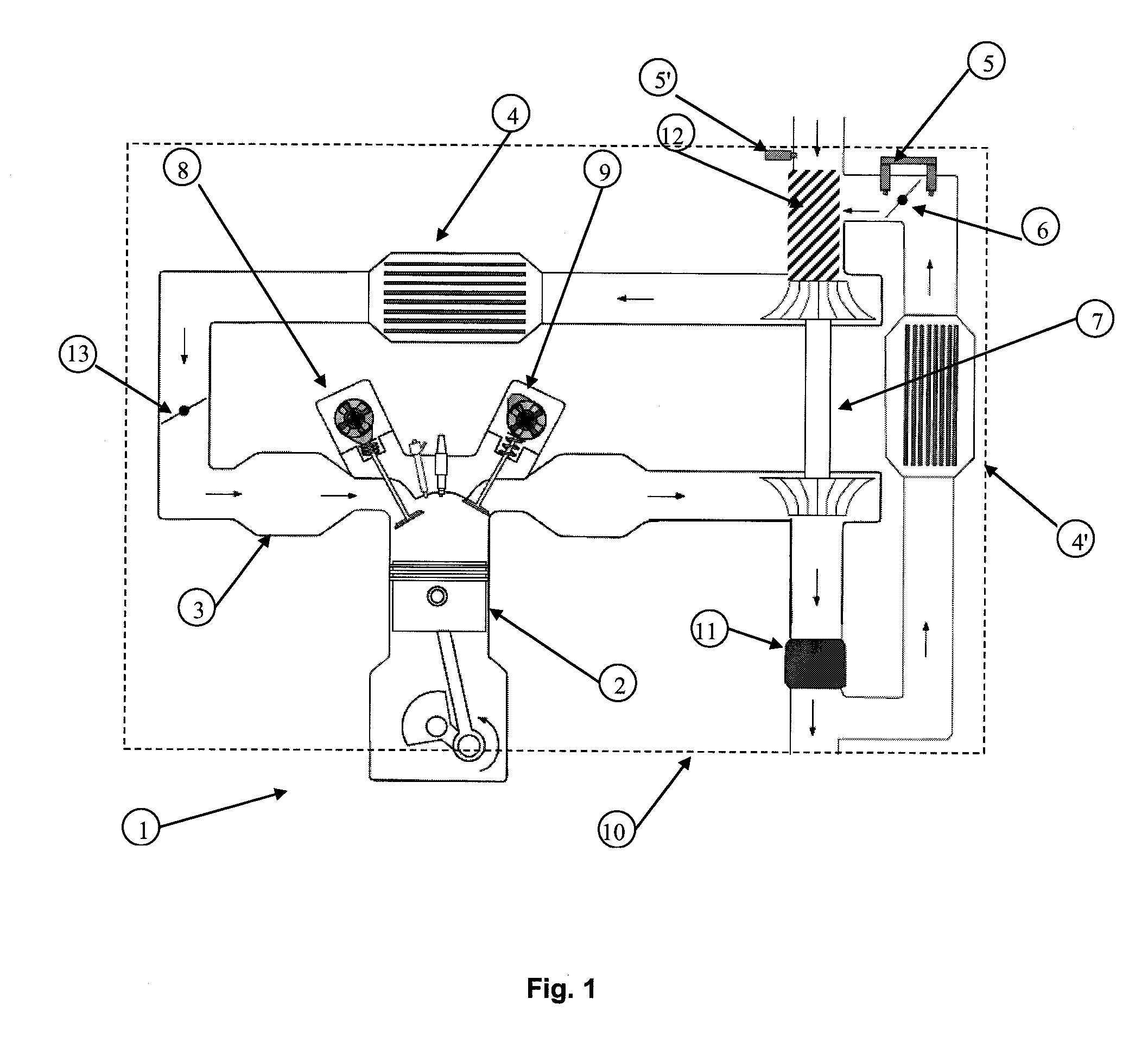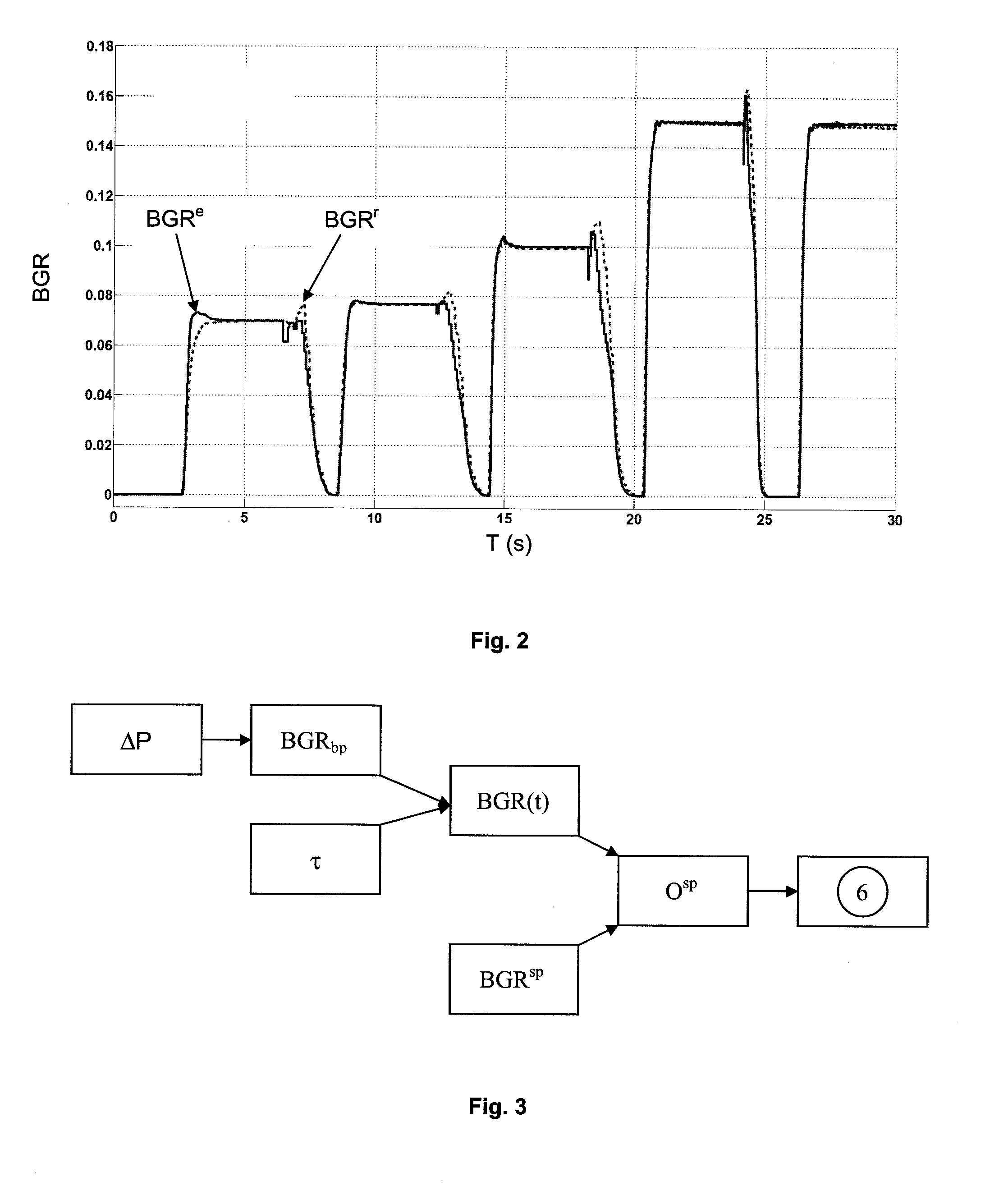Method of controlling a combustion engine from estimation of the burnt gas mass fraction in the intake manifold
- Summary
- Abstract
- Description
- Claims
- Application Information
AI Technical Summary
Benefits of technology
Problems solved by technology
Method used
Image
Examples
Embodiment Construction
[0026]FIG. 1 shows a gasoline engine (1) provided with an EGR burnt gas recirculation circuit. At least one cylinder (2) of combustion engine (1) is supplied with air and burnt gas from an intake manifold (3). The air intake circuit is provided with a cooler (4) and a turbocharger (7) compressor. The exhaust line consists of an exhaust manifold (13), a turbocharger (7) turbine, a bypass line, for injecting part of the burnt gas into the air intake circuit. This part of the circuit is notably provided with a cooler (4′) and a controlled valve, referred to as EGR valve (6), which controls the amount of burnt gas injected into the air intake circuit. This engine is in particular equipped with either a pressure difference detector (5) at the level of the EGR valve or an air flow meter (5′) at the start of the intake line. Engine (1) as shown in FIG. 1 is also provided with a direct injection device and a variable valve timing system, these elements being usually present in a downsized e...
PUM
 Login to View More
Login to View More Abstract
Description
Claims
Application Information
 Login to View More
Login to View More - R&D
- Intellectual Property
- Life Sciences
- Materials
- Tech Scout
- Unparalleled Data Quality
- Higher Quality Content
- 60% Fewer Hallucinations
Browse by: Latest US Patents, China's latest patents, Technical Efficacy Thesaurus, Application Domain, Technology Topic, Popular Technical Reports.
© 2025 PatSnap. All rights reserved.Legal|Privacy policy|Modern Slavery Act Transparency Statement|Sitemap|About US| Contact US: help@patsnap.com



